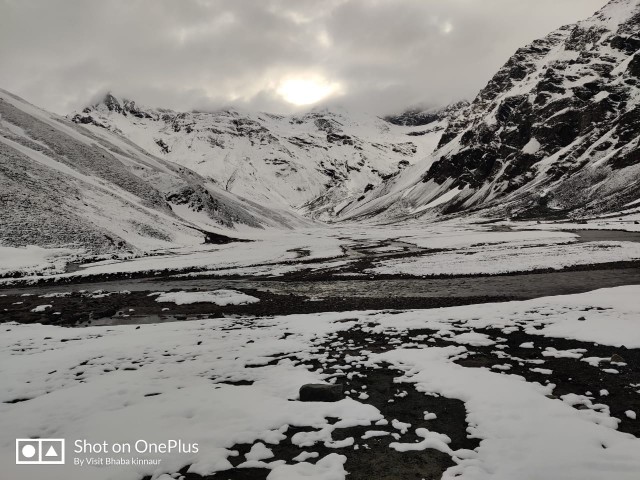The Himalayas and Their Importance for Life
The Himalayas are not just majestic mountains—they are the lifeline of millions. They play a vital role in regulating the climate, acting as a natural barrier that influences weather patterns across the Indian subcontinent. The region is home to the source of major rivers like the Ganga, Yamuna, and Brahmaputra, which support agriculture, drinking water, and livelihoods for millions.
Rich in biodiversity, the Himalayas house unique flora, fauna, and sacred sites, making them culturally and environmentally significant. They also provide opportunities for spiritual growth, adventure, and eco-tourism.
Simply put, the Himalayas are a symbol of strength, balance, and sustainability—crucial for both nature and human life.
🏔️ Himalayan Ranges Around the World
The Himalayas are one of the youngest and highest mountain ranges in the world, stretching across five major countries in South Asia:
- India
- Nepal
- Bhutan
- China (Tibet)
- Pakistan
The total length of the Himalayas is about 2,400 kilometers (1,500 miles), running in a west-to-east arc.
🔺 Major Himalayan Sub-Ranges
- Greater Himalayas (Himadri) – Home to the highest peaks, including Mount Everest (8,848m) and Kanchenjunga (8,586m).
- Lesser Himalayas (Himachal) – Includes hill stations and middle-altitude ranges like Pir Panjal and Dhauladhar.
- Shivalik Hills (Outer Himalayas) – The foothills of the Himalayas, lower in altitude and rich in forests and biodiversity.
🌍 Global Importance
While the Himalayas are mainly located in Asia, they have a global impact:
Attract trekkers, mountaineers, and spiritual seekers from all over the world.
They influence climate and monsoon patterns.
Serve as the water source for major rivers used by nearly 1.5 billion people.
🏔️ Top 14 Eight-Thousanders (8000m+ Peaks of the World)
| Rank | Mountain | Height (m) | Location |
|---|---|---|---|
| 1 | Mount Everest | 8,848.86 | Nepal / China (Tibet) |
| 2 | K2 | 8,611 | Pakistan / China (Karakoram) |
| 3 | Kangchenjunga | 8,586 | India / Nepal |
| 4 | Lhotse | 8,516 | Nepal / China |
| 5 | Makalu | 8,485 | Nepal / China |
| 6 | Cho Oyu | 8,188 | Nepal / China |
| 7 | Dhaulagiri I | 8,167 | Nepal |
| 8 | Manaslu | 8,163 | Nepal |
| 9 | Nanga Parbat | 8,126 | Pakistan |
| 10 | Annapurna I | 8,091 | Nepal |
| 11 | Gasherbrum I | 8,080 | Pakistan / China (Karakoram) |
| 12 | Broad Peak | 8,051 | Pakistan / China (Karakoram) |
| 13 | Gasherbrum II | 8,035 | Pakistan / China (Karakoram) |
| 14 | Shishapangma | 8,027 | China (Tibet) |
🌍 Quick Facts
-
All 14 peaks are located in Asia (Nepal, India, Pakistan, China).
-
Mount Everest is the tallest in the world.
-
The Karakoram Range (Pakistan-China border) includes 4 of these peaks.
-
Climbing all 14 is considered one of the greatest challenges in mountaineering.
Content
- HIMALAYAN RANGES
- 8000 METERS
- TOP PEAKS
- MOUNTAINEERING
- TREKKING ROUTES
🏔️ Top Indian Peaks of the Himalayas
| Rank | Peak Name | Height (m) | Location (State/Region) | Notes |
|---|---|---|---|---|
| 1 | Kangchenjunga | 8,586 | Sikkim | 3rd highest in the world; shared with Nepal |
| 2 | Nanda Devi | 7,816 | Uttarakhand | Highest peak located entirely in India |
| 3 | Kamet | 7,756 | Uttarakhand | 2nd highest in Uttarakhand |
| 4 | Saltoro Kangri | 7,742 | Ladakh (disputed region) | Located near the Siachen Glacier |
| 5 | Saser Kangri | 7,672 | Ladakh | Karakoram range |
| 6 | Mamostong Kangri | 7,516 | Ladakh | Among the highest in eastern Karakoram |
| 7 | Rimo I | 7,385 | Ladakh | Part of the Rimo Muztagh subrange |
| 8 | Hardeol | 7,151 | Uttarakhand | Known as the “Temple of God” |
| 9 | Trisul I | 7,120 | Uttarakhand | Named after Lord Shiva’s trident |
| 10 | Chaukhamba I | 7,138 | Uttarakhand | Prominent peak in the Gangotri region |
📌 Did You Know?
-
Kangchenjunga is considered sacred in Sikkim and often revered rather than climbed from the Indian side.
-
Nanda Devi Biosphere Reserve is a UNESCO World Heritage Site.
-
Many of these peaks are part of protected regions due to ecological and strategic importance.
🏔️ Top Mountaineering Institutes in India
| S.No | Institute Name | Location | Key Highlights |
|---|---|---|---|
| 1️⃣ | Himalayan Mountaineering Institute (HMI) | Darjeeling, West Bengal | One of the oldest and most prestigious; founded in 1954. |
| 2️⃣ | Nehru Institute of Mountaineering (NIM) | Uttarkashi, Uttarakhand | Premier institute known for high-altitude training and rescue. |
| 3️⃣ | Jawahar Institute of Mountaineering and Winter Sports (JIM & WS) | Pahalgam, Jammu & Kashmir | Known for winter sports, skiing, and basic mountaineering. |
| 4️⃣ | Atal Bihari Vajpayee Institute of Mountaineering and Allied Sports (ABVIMAS) | Manali, Himachal Pradesh | Offers adventure courses, skiing, water sports, and mountaineering. |
| 5️⃣ | Indian Institute of Skiing and Mountaineering (IISM) | Gulmarg, Jammu & Kashmir | Specializes in skiing, snowboarding, and winter survival courses. |
| 6️⃣ | Sikkim Mountaineering Association (SMA) | Gangtok, Sikkim | Promotes eco-trekking and mountaineering in the Eastern Himalayas. |
🧗 Courses Offered
-
Basic & Advanced Mountaineering Courses
-
Rock Climbing
-
Skiing & Snowboarding
-
Search & Rescue
-
Trekking Leadership Programs
-
Adventure & Survival Skills
🏔️ Did Shepherds Start the Trekking Trend?
In many ways, yes — shepherds were among the first natural trekkers.
Long before trekking became a sport or recreational activity, shepherds regularly walked across mountains, valleys, and remote terrains while grazing their animals. They followed seasonal migration routes, often through challenging landscapes, relying only on nature for survival.
Their deep knowledge of trails, weather, and terrain laid the foundation for many of today’s popular trekking routes. In places like the Himalayas, Alps, and Andes, modern trekking trails often follow ancient paths created by shepherds and traders.
So while they didn’t “start a trend” in the modern sense, shepherds were definitely the original trekkers, living the adventure long before it became a hobby or sport.
🥾 Top Trekking Routes of India
| S.No | Trek Name | Location | Highlights |
|---|---|---|---|
| 1️⃣ | Chadar Trek | Ladakh | Frozen Zanskar River, extreme winter conditions ❄️ |
| 2️⃣ | Roopkund Trek | Uttarakhand | Mysterious lake with human skeletons, alpine meadows 🏔️ |
| 3️⃣ | Hampta Pass Trek | Himachal Pradesh | Lush green valleys to arid Lahaul landscapes 🍃🏞️ |
| 4️⃣ | Valley of Flowers | Uttarakhand | UNESCO World Heritage site, vibrant alpine flowers 🌸 |
| 5️⃣ | Kedarkantha Trek | Uttarakhand | Best winter trek for beginners, snowy peaks 🏕️ |
| 6️⃣ | Goechala Trek | Sikkim | Stunning views of Kanchenjunga, rich flora and fauna 🏔️ |
| 7️⃣ | Sandakphu Trek | West Bengal/Sikkim | View of 4 of the 5 highest peaks including Everest 🌄 |
| 8️⃣ | Tarsar Marsar Trek | Jammu & Kashmir | Scenic twin alpine lakes, lesser-known beauty 🏞️ |
| 9️⃣ | Markha Valley Trek | Ladakh | High-altitude passes, Buddhist villages, and monasteries 🙏 |
| 🔟 | Pin Parvati Pass Trek | Himachal Pradesh | Challenging terrain, glaciers, and thrilling adventure ❄️🧗 |
🧭 Tips:
- Best seasons: May–June & September–October for most treks; December–February for snow treks like Kedarkantha & Chadar.
- Fitness and proper gear are essential.
- Some treks require permits, especially in protected or border areas.
🧘♂️ Top Meditational Treks in the Himalayas
| S.No | Trek Name | Location | Highlights |
|---|---|---|---|
| 1️⃣ | Kheerganga Trek | Himachal Pradesh | Natural hot springs, pine forests, ideal for spiritual reflection 🌲♨️ |
| 2️⃣ | Valley of Flowers | Uttarakhand | Calm, colorful meadows, perfect for silence and connection with nature 🌸 |
| 3️⃣ | Hemkund Sahib Trek | Uttarakhand | Sacred Sikh shrine at high altitude, serene lake and spiritual energy 🙏 |
| 4️⃣ | Triund Trek | Himachal Pradesh | Short but soulful trail near Dharamshala, ideal for meditation under the stars 🌌 |
| 5️⃣ | Tungnath-Chandrashila Trek | Uttarakhand | Home to the world’s highest Shiva temple, deeply spiritual and panoramic views 🕉️ |
| 6️⃣ | Yuksom to Dzongri Trek | Sikkim | Peaceful trails through monasteries and deep forests, quiet and powerful ✨ |
| 7️⃣ | Phuktal Monastery Trek | Zanskar, Ladakh | A hidden Buddhist monastery built into a cliff—remote, silent, and deeply meditative 🏞️ |
| 8️⃣ | Padum to Darcha Trek | Ladakh–Himachal Border | Isolated and spiritual journey through ancient Zanskar villages 🏔️ |
🕯️ Why These Treks are Meditational:
- Less crowd, more serenity
- Spiritual sites like temples, monasteries, sacred lakes
- Opportunities for silent walking, mindfulness, and self-reflection
- Close connection with pristine natural surroundings
🕉️ Top Shiv Yatra Treks in the Himalayas
| S.No | Yatra Name | Location | Highlights |
|---|---|---|---|
| 1️⃣ | Kailash Mansarovar Yatra | Tibet (via Uttarakhand/Sikkim) | Sacred walk around Mount Kailash, believed to be Lord Shiva’s abode; deeply spiritual and challenging trek 🏔️🙏 |
| 2️⃣ | Amarnath Yatra | Jammu & Kashmir | Trek to the holy cave shrine where a naturally formed ice Shivling appears ❄️🕉️ |
| 3️⃣ | Kinner Kailash Yatra | Himachal Pradesh | Pilgrimage to the legendary Shivaling rock at 15,000+ ft, associated with Lord Shiva’s meditation ⛰️🔥 |
| 4️⃣ | Shrikhand Mahadev Yatra | Himachal Pradesh | Tough spiritual trek to 18,570 ft to witness the massive Shivaling-shaped rock, surrounded by snow and silence 🏞️ |
| 5️⃣ | Panch Kedar Yatra | Uttarakhand | Trek to five sacred temples: Kedarnath, Tungnath, Rudranath, Madhyamaheshwar & Kalpeshwar—each linked to Shiva’s legend 🕉️🏔️ |
| 6️⃣ | Tungnath-Chandrashila Trek | Uttarakhand | Visit the world’s highest Shiva temple (Tungnath), with sunrise meditation views from Chandrashila peak 🌄🙏 |
| 7️⃣ | Neelkanth Mahadev Trek | Uttarakhand (Rishikesh) | Short trek to the famous Neelkanth Mahadev Temple, said to be where Shiva consumed poison during Samudra Manthan 🧪🕉️ |
🕯️ What Makes These Treks Special?
- Deep spiritual connection with Lord Shiva
- High-altitude trekking experience combined with inner reflection
- Sacred stories from ancient Hindu mythology
- Opportunities for meditation, prayers, and personal transformation


Comments are closed